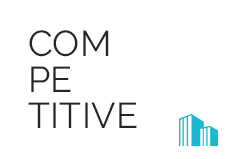Application
GENERAL
The eligible total budget of the project must be at least 25,000 €. There is no specific upper limit for the project budget, but the costs must be realistic and in line with the project content, as well as with the principles of sound financial management.
The maximum funding is 85% in all thematic programme priorities, and at least 15% financing contribution for each project partner must be available from national resources.
Each project must involve at least one Austrian and at least one Hungarian partner. One of them must take over the role of the lead partner.
Reference to the Manuals
Application Manual 1.2.2, Eligibility Manual 3.2, Application Manual 1.1.3
All co-operation projects must fulfil the following two criteria:
- joint preparation,
- joint implementation.
In addition to that, all projects must also fulfil at least one of the following two criteria:
- joint financing,
- joint staffing.
Reference to the Manuals
Application Manual 1.2.3
Applicants must be national, regional or local public bodies, public equivalent bodies, non-profit organisations or other institutions which on project level act in public interest. Also private institutions (including private companies) having legal personality can be applicant.
Applicants must be located in the programme area, or if duly justified, outside the programme area.
An organisation outside the programme area can only be lead partner if it has legally defined competences or field of functions for certain parts of the eligible area.
Private persons, political parties and individual entrepreneurs cannot apply for funding.
Reference to the Manuals
Application Manual 1.1, Selection Criteria (Table 1 Administrative and eligibility criteria; B.2, B.3), Eligibility Manual 3.7.1
The Lead Partner is the partner that overtakes the general responsibility for the development of the application.
If the project is approved, the LP signs the ERDF funding contract with the Managing Authority, and then it also takes the overall responsibility for the implementation of the project. During implementation its relations with the other partners is laid down in the partnership agreement, which is a compulsory annex of the submitted application.
The LP also prepares and submits project level reports including the certificates of the expenditure of all partners.
The LP receives the ERDF funding and forwards it to the partners.
Usually the LP role should be taken up by the partner that has sufficient experience and appropriate capacity for this task.
Reference to the Manuals
Application Manual 1.1.3
Strategic Partners are those partners who don't actively contribute to the co-operation criteria and don't have a financial share in the project implementation.
Reference to the Manuals
Application Manual 2.3.1, Partnership Agreement template §1
It depends. To involve of a broad circle of actors is usually an asset for the project, but the involvement can have various forms.
Members of the various target groups, partners who actively contribute to the co-operation criteria, external service providers and experts have their specific roles and benefits from a co-operation, but not necessarily all of them must be project partners (PP) and directly receive ERDF funding.
Inviting partners with different specific competences and representing different geographic regions can be both an advantage (as the project can have a broader impact), and a challenge (from the perspective of project management and co-ordination). Projects with small partnership usually are more transparent and have smaller implementation risk.
The application is not judged by the size of the partnership, but by the quality of the co-operation (based on the data available in the application form). All partners should have a defined and active role in the partnership, as well as experiences and competences in line with that.
Reference to the Manuals
Application Manual 2.3.1, Selection Criteria (Table 2 Strategic assessment criteria, Partnership relevance)
The project must contribute to one of the thematic objectives of the Interreg Programme Austria-Hungary (1. Competitiveness of SMEs, 2. Protecting the environment and promoting resource efficiency, 3. Promoting sustainable transport and removing bottlenecks in key network infrastructures, and 4. Enhancing institutional capacity and an efficient public administration).
All 4 thematic objectives have one or more specific objectives, of which the project must select one.
Reference to the Manuals
Cooperation Programme www.interreg-athu.eu (About the Programme / Priorities)
Your project must have (at least) one main output. The programme provides you a list of output indicators, you have to say in your application which one(s) your project's main output(s) contribute to, and how.
You also have to select one of the programme's result indicators. They measure the achievements of the programme on a broader level. Supported projects are expected to produce results that contribute to these programme result indicators.
The set of objectives and their indicators must be built in a logical structure which ensures that the interventions on the project level produce the impacts desired by the programme.
Reference to the Manuals
Application Manual 2.2, Guide on Indicators
The project must provide benefits for the cross-border region of Austria and Hungary (Nord-, Mittel-, und Südburgenland, Wien, Wiener Umland-Südteil, Niederösterreich Süd, Graz und die Oststeiermark, and the counties Györ-Moson-Sopron, Vas und Zala).
Project partners typically come from the programme area, but in duly justified cases also partners outside the programme area can be involved. Such case is e.g. if the partner has a specific knowledge, or if it has legally defined competences or field of functions for certain parts of the eligible area. Also in such cases, the primary impact of the project must be in the programme area.
Activities usually take place in the programme area, but some activities can take part also outside. Such examples are activities of the partners from outside, or typically travels to targets outside of the programme region. The related costs of the project are eligible as long as these activities are in line with the objectives of the approved project, or confirmed by the Managing Authority or Joint Secretariat during implementation.
Reference to the Manuals
Eligibility Manual 3.7, Application Manual 1.1.2
Projects are entitled for reimbursement for their preparation costs in the form of a lump sum, which amounts to 5000 € of total eligible expenditure (max. 4250€ ERDF). The 5000€ must be allocated to the Work Package Preparation and can be distributed between the partners according to their agreement. If the project is not approved or not contracted (e.g. due to non-fulfilment of approval conditions), the reimbursement of preparation costs cannot take place.
For projects involving infrastructure and works, real costs of external services related to preparation of necessary project documentation and obtaining the necessary permissions as well as expenditures related to the acquisition of land may be eligible as preparation costs. If this possibility is used, the lump sum for preparation costs as described above cannot be applied.
Reference to the Manuals
Eligibility Manual 3.6, eMS Guide to Fill In 6.4.1.2
The Regional Coordinators of the programme are your primary support in the project development phase in topics such as project content, financing, compliance with the thematic requirements of the programme as well as with the national and regional strategies, and many more. Regional Coordinators are available in all regions of the programme, both in Austria and in Hungary.
If you have questions related to the applicable rules and requirements of the programme, you can also contact the Joint Secretariat for more information. Please note that the JS is not in the position to give you content related advice in the course of project development, as they are responsible for the quality assessment in preparation of the Monitoring Committee's decision.
If you have questions or issues related to eMS, please contact the JS.
Phone and e-mail contacts of the RCs and of the JS are available in the Contact section of the programme homepage.
Reference to the Manuals
www.interreg-athu.eu "Contact"
Different persons, representing different bodies of the programme have different perspectives, partly due to their different roles. Not all aspects of an application can be assessed on an objective scale or based on objectively verifiable rules of yes or no.
It is a programme decision to provide the Eligibility Manual, Implementation Manual and the Guide on Indicators in English.
Although the intention of the programme is to provide information in German and in Hungarian, for these documents the precise development of the content required one single working language, and the translation would open a lot of issues harmonizing the German and Hungarian versions with each other and with the English original.
Please also note that many cross border programmes offer one single programme language (usually English) for their applicants and beneficiaries throughout the whole application and implementation procedure. That the project holders of the Austria-Hungary Interreg Programme can use German and Hungarian in their applications and reports is not only an advantage for a chance of better understanding, but also sometimes a challenge for harmonised contents and definitely a factor in terms of translation and time.
The Application form has to be filled in bilingually, German and Hungarian. The project summary is the only field that also has to be filled in in English.
The following annexes to the application form must be bilingual (German and Hungarian):
- lead partner declaration,
- partnership agreement.
Other documents must be submitted in the native language of the partner concerned. Feasibility studies must have an executive summary in English.
The partner report with all elements, including its content and financial parts, should be completed in the language of the partner (German for Austrian partners, Hungarian for Hungarian partners).
The project report should be completed normally in German and Hungarian. In special cases, if the agreed common language of the partnership is English (e.g. in case of a project that is (also) targeted to a wider international audience) it is possible that the project report is completed in English.
Evidence about deliverables and outputs or any kind of product of the project must be made available in all languages they have been produced in (normally both German and Hungarian (and/or in English)).
Reference to the Manuals
Application Manual 3.1, Implementation Manual 3.3.3 and 3.4.3
You can find a checklist for the documents to be submitted in attachment of the application form, in Annex 4 of the Application Manual.
Reference to the Manuals
Application Manual Annex 4
Some of the main challenges are:
- Beneficiaries must pre-finance the project typically at least one year after the contract: the first ERDF payment is transferred to the LP (and by the LP to the partners) after the first project report is confirmed by all relevant programme bodies. This is at least half a year after the end of the first reporting period, or a year after project start (assuming typical 6 month reporting periods).
- Risk of expenses not being verified: does your organisation have the necessary resources, if not all of your expenditures would be certified and you'd receive a reimbursement lower than 85% of your expenses?
- Administrative burden: in spite of every effort of the Programme for simplification, still considerable administrative capacities are needed to secure proper and timely implementation and reporting.
Reference to the Manuals
Implementation Manual
BUDGET
The budget is supposed to help you plan your expenses during implementation. You surely have certain requirements on your mind when you are planning the equipment purchase and you also check the relevant market prices. The information you record in budget position helps the assessors see what you were planning and how far it is realistic. If there is not enough information about the item, the assessors won't be able to see if the proposed equipment is in line with the project content and how far your budget is realistic - which can negatively effect the quality assessment of the project.
On the other hand the budget is not supposed to bind you too much for the implementation. If you provide too many details, any deviation during the project may need additional explanations.
Please always try to find a good balance between unspecified and overspecified budget items, and always try to keep action plan and budget properly coordinated.
Reference to the Manuals
Application Manual 6.5
It is understandable if you would like to purchase equipment that you can use also after project closure. If your project is supposed to establish the technical environment for a certain purpose (e.g. set up a lab or education infrastructure), than such durable, high value thematic equipment may be the perfect choice and usually fully eligible for funding, as it is clearly linked to the project.
However, if the equipment is not exclusively used in the project (e.g. the project involves some measurements and a measurement tool is purchased, but it can be used also for other measurements independent of the project), only a part of the related costs may be eligible. In this case you should be able to show which proportion of the use of that equipment can be allocated to the project.
If the equipment concerns equipment for the general office use, its depreciation can be eligible limited to the period of time it is used in the project until its closure.
Reference to the Manuals
Eligibility Manual 5.5
No, to use a monthly exchange is EU rule.
The exchange rate risk must be borne by the beneficiaries. By submitting partner reports as soon as possible, the time span between the occurrence of the costs and the date of the applicable exchange rate can be minimised.
Reference to the Manuals
Eligibility Manual 3.8 in line with Art. 28. of Regulation 1299/2013/EU
If the fee of the expert (a natural person) is paid on the basis of a "service contract" (megbízási szerződés / Werkvertrag) between the PP and him/her, no invoice is issued but his/her fee is accounted in the books of the beneficiary similar to wages. However, due to the nature of the activity, the rules to select external experts (including the proof of market price according to the thresholds) must be applied, and therefore such costs are to be budgeted in the budget line for external expertise and services.
BUDGET / STAFF COSTS
How should we chose the appropriate reporting scheme for staff costs? Can we change our minds later?
If you chose to apply real costs for staff (not the flat rate option), you can choose to report full time, part time fixed or part time flexible and employees being contracted by the hour.
Full time means that the employee devotes all of his/her working hours to the project (independent if he/she is part time or full time employed at the organisation).
Persons employed part time in the project spend only a part of their working hours on the project. The selection between the flexible and fix hours may depend on the nature of the work, but also the available documentation may play a part in the choice. It is a good idea to consult your RC in advance, even the FLC, especially if you have already been in contact with them before.
Being employed on an hourly basis is a typical (but not necessarily exclusive) choice for student part time jobs.
When a project is approved, the beneficiaries get a staff cost data sheet from their RC where they must record the name, employment dates (from-to) and selected scheme/method for the people employed in the project (concrete employed people not positions) for the better overview of involved staff and chosen schemes.
Due to the different documentation needed for the various schemes and methods the change between them is restricted to
- change between full time employment and part time employment with a fixed percentage, or
- different percentage within the scheme part time employment with fixed percentage.
Reference to the Manuals
Eligibility Manual 5.1.3.2
From the perspective of the project you are employed part time, because a part of your working hours is spent on some other project(s).
Reference to the Manuals
Eligibility Manual 5.1.3.2
If you are solely employed for the purposes of the project, all expenditure related to your employment should reported. Even if you spend some part of your working time on general office tasks (e.g. participate in staff coordination meetings, do the office background administration), this is part of your work, and the relevant share of the staff expenditure does not need to be deducted.
If your employment contract, job description or other document clearly defines the percentage of your working hours that must be devoted to the project, you can chose the percentage method. In this case you don't have to document your hours spent on the project with time sheets, but you have to submit a periodic staff report about the activities you performed for the project in the given period. It is not important if you work every day exactly the same number of hours on the project.
If the hours worked on the project are not fixed in the employment document or elsewhere, and the time devoted to the project can vary according to the actual work load, you should choose the flexible scheme. The number of hours worked on the project must be documented by a time sheet (covering 100% of the working time of the employee), and the hourly rate can be calculated by two different methods (based on the monthly employment costs and the so called 1720 method). The hourly rate for the 1720 method should be fixed on the staff cost data sheet and remain unchanged for the given person. Periodic staff reports are not needed in these cases.
Reference to the Manuals
Eligibility Manual 5.1.3.2.b
The expenditure related to the employment of Freie Dienstnehmer (in Austria) must be reported as staff cost.
Reference to the Manuals
Eligibility Manual 5.1.1
Targeted tasks (for Hungarian project partners) can be reported only in case the normal working hours (or a part of them) for a certain person are not reported in the project. The salary for the targeted task must not exceed a defined percentage of the normal salary (for details please contact the Hungarian FLC), and in eMS such staff costs should be reported as full time employment (assuming that the targeted task is solely related to project activities).
EMS
The Application Handbook gives you sufficient information on the required content of the applications, which is broken down to the fields of the application form in the eMS Manual.
The structure of a project depends on its content, there is no one fits all solution. eMS provides sufficient flexibility for this, but you have to use it the best way it fits your project.
In case you are in doubt, what kind of information or what level of detail is expected at certain parts of the application form, please contact your RC.
Reference to the Manuals
Application Manual, eMS Guide to Fill In
The comment boxes in the individual budget positions can be scrolled with the up and down arrows at the right of the textbox, and enlarged if the user grabs with the cursor the bottom right corner of the field.
It is not supposed that applicant users can delete uploaded attachments. Please add a comment that the file is outdated (right hand column) and upload the right file.
In case you uploaded a document by mistake, which is not linked to the project at all (e.g. a private document), please contact the JS for support.
FINANCING
In the Austria-Hungary Interreg Programme the co-financing provided by the European Regional Development Fund (ERDF) cannot exceed 85% on partner level. Depending on the financing capacity or the project partner in question and the characteristics of the project in question, the ERDF rate can also be less than 85%. The rest must be provided in the form of national financing contributions. Partners can have different co-financing rates.
Reference to the Manuals
Eligibility Manual 3.2, Application Manual 2.1.7
The financing of each partner's budget which is not covered by ERDF, must be ensured in the form of national financing contributions (at least 15% altogether) which may be available in the form of own resources and/or third party financial contribution (both can take the form of public or private resources).
In Hungary 10% or 15% of the partner budget (depending on the type of organisation) is automatically provided by the government.
We advise you to contact your Regional Coordinators in any case for more information about financing possibilities!
Reference to the Manuals
Eligibility Manual 3.2, Application Manual 2.1.7
Organisations that are entitled for VAT refund for their activities in the project (also if they are in general exempt from VAT), can reimburse only the net costs (without VAT).
Please carefully check your VAT status for your activities in the project and mark it in the application form at the partner data section, in line with the VAT declaration (attachment). The budget itself has to be planned accordingly (net costs for partners entitled for VAT refund, gross for partners who aren't).
Reference to the Manuals
Eligibility Manual 3.9.e, eMS Guide to Fill In 6.2
The costs of the project can take the form of:
- staff costs
- office and administration
- travel and accommodation
- external expertise and services
- equipment
- infrastructure and works
In the Eligibility Handbook you can find more information about the definition, forms of reimbursement, specifications, reporting and documentation related to each cost category.
Reference to the Manuals
Eligibility Manual 5, Application Manual 2.7, eMS Guide to Fill In 6.5









